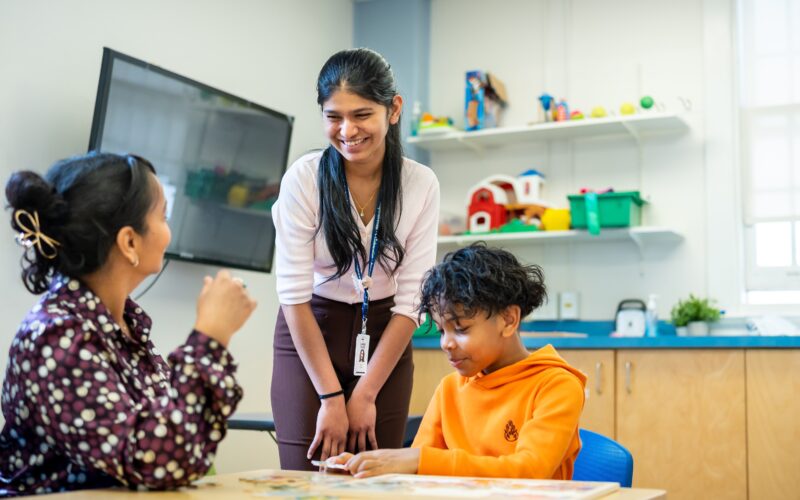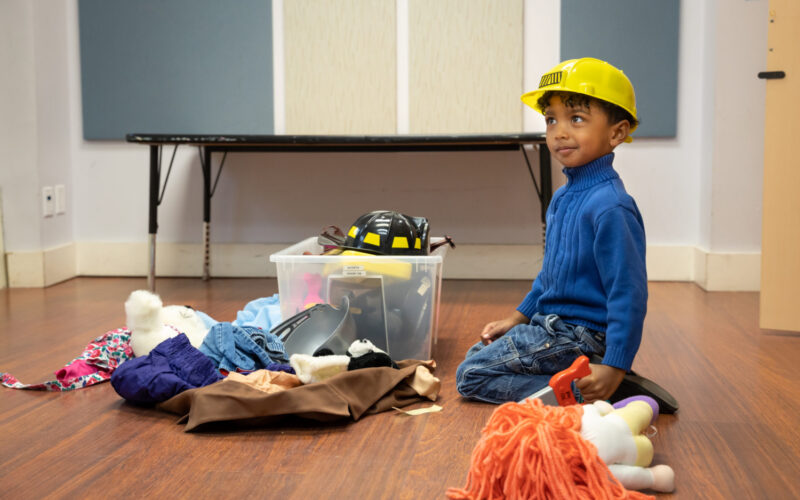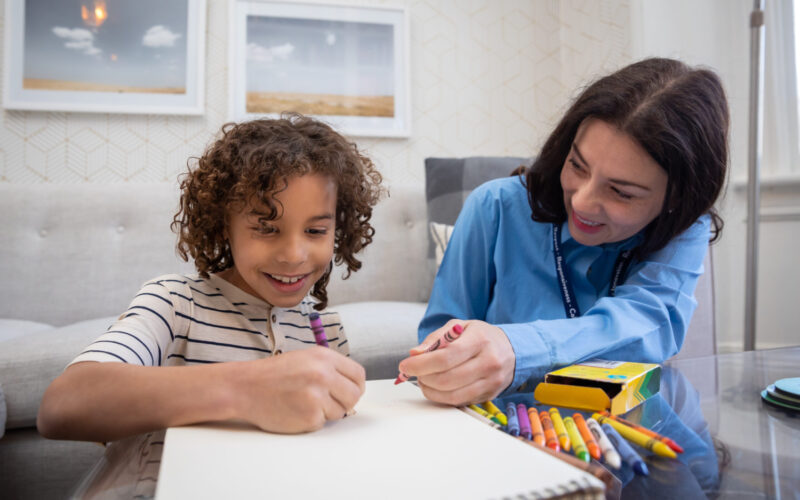Children with autism sometimes have trouble accessing health care due to behaviour challenges. Without access to medical screenings, health problems and underlying conditions can go undetected. But with a few simple modifications, your medical practice can create a positive experience for patients with autism. These changes have little impact on your practice, but they make a big difference for families who need support. If your patient with autism has emerging challenging behaviours, you may also want to consider referring them to our Urgent Response Services.
By planning ahead, you can ensure your office and staff are prepared to support your patient with autism. Consider the following tips:
Prepare yourself and your staff
- Ask questions. Before theday of the appointment, speak with the child’s parents to learn as much as you can about them and what has made medical appointments challenging in the past.
- See them first. If a child has trouble waiting or being around strangers, make sure they’re booked for the first appointment of the day.
- Be quick. When the child arrives, direct them straight to the exam room. Try to see the child quickly once they’re ready.
- Be prepared. Sometimes behaviours are unavoidable. If challenging behaviours arise in the waiting room, be prepared to move the child to a different area. This could be a hallway, an exam room or an office. If this isn’t possible, remove other patients from the waiting area.
Prepare your schedule
- Keep it short and sweet. Consider breaking up one long visit into two (or more) short visits. Keep in mind the ultimate goal is for the visit to be successful, which may be easier to achieve with multiple visits.
- Chat with the family beforehand. For children who can’t tolerate a lot of time in the office, it can be helpful to have a call with the caregiver or family member before the appointment to gather as much information as possible (for example, the child’s history and any concerns). This helps limit the amount of time the child spends at the office.
- Create opportunities for breaks. Consider whether a child could find breaks helpful and schedule the visit accordingly. (e.g., Take down the child’s medical history, medications and current concerns, let them leave for a break while you see another patient, then resume the appointment later for the physical exam.)
- Ending early is okay. Be prepared to end the appointment early and schedule a follow-up visit if challenging behaviours arise. It’s more important to end an appointment prematurely than to push through, allowing challenging behaviours to escalate.
Prepare your office space
- Think efficiency. Consider what you and your staff can do to make the appointment as fast as possible. Make sure equipment is ready to go, and interruptions are kept to a minimum.
- Think triggers. Make sure and ensure any potential triggers (like needles) are kept out of sight.
- Think accommodations. Speak to the child’s caregiver or family member about any modifications that can be made to the office environment. Perhaps turning down the lights will help if the child has sensory sensitivities. You may also consider removing objects from the waiting area that the child may throw if challenging behaviour occurs.
Things to consider before and during the visit
- Suggest using pictures. Ask the parents whether showing the child visuals before the appointment would help prepare them. Sometimes looking at photos or illustrations of the waiting room, the medical building and the exam room (even pictures of medical devices like the blood pressure cuff) ahead of time can help ease anxiety about the medical visit. The pictures can also be part of a social story that the caregiver or family member shares with the child before the visit.
- Have a plan b. Have a discussion with the parent or caregiver about things that might help their child calm down if challenging behaviours occur or start to escalate. Sometimes giving the child a device and letting them watch a video or giving them a favourite comfort toy can help.
- Check-in with parents. Ask the parent about warning signs to look out for so that you can be prepared. It’s also a good idea to check in with the parent during the appointment to ask whether to proceed or end early.
- Engage the patient. During the visit, communicate directly with older children, teens or young adults. You will learn a lot of information from the patient that their parent or caregiver may not be aware of. In an ideal scenario, a parent or caregiver will be present to help facilitate interactions and fill in the blanks. Keep in mind that giving control to the patient will help make the visit a positive experience for them.
- Help ease caregiver stress. Consider writing down a summary of the visit and any next steps for the parent or caregiver. Medical appointments can be stressful for parents and caregivers of children with autism, especially if they’ve had negative experiences in the past. They may forget important information if their focus is on getting their child through the appointment. Write down information and any actions the caregiver needs to take. This will ensure nothing is missed.
Points to keep in mind
- Some children with autism are reluctant to see a doctor due to past negative experiences.
- Medical visits can be challenging for children with autism. There are a variety of reasons for this, including sensory sensitivities and the unpredictable nature of appointments.
- Children and young people with autism can be a difficult population to reach. If you can help make medical appointments successful, this will help ensure children and youth with autism get the care they need to live healthy lives.
Patient with new or escalating urgent behaviours?
For physicians serving clients with autism in Toronto, you may be interested in Surrey Place’s Urgent Response Services. Urgent Response Services help children and teens with urgent behaviours that are new or have been escalating over the last 14 days. These behaviours can include aggression, violent thinking, suicidal ideation or behaviour, fire starting, harm to animals, risk of exploitation, self-injurious behaviour, inappropriate sexual behaviour, flight risk and property destruction. If you have a client who has suddenly started exhibiting a new behaviour and is at risk of harming themselves or others, consider referring them to Urgent Response Services.
Physicians who have patients with autism or intellectual or developmental disabilities may also find tools developed by the Developmental Disabilities Primary Care Program useful to support communication, transparency and accountability in your medical practice.
About Urgent Response Services
This resource was written with support from staff in Urgent Response Services. Urgent Response Services are part of the Ontario Autism Program. They were created to support children or youth with an emerging urgent need. Surrey Place leads Urgent Response Services for Toronto Region in partnership with 2-Spirited People of the 1st Nations, Community Living Toronto, Family Service Toronto, Geneva Centre, Holland Bloorview, Kerry’s Place, Lumenus, SAAAC, SMILE Canada and Strides Toronto.


